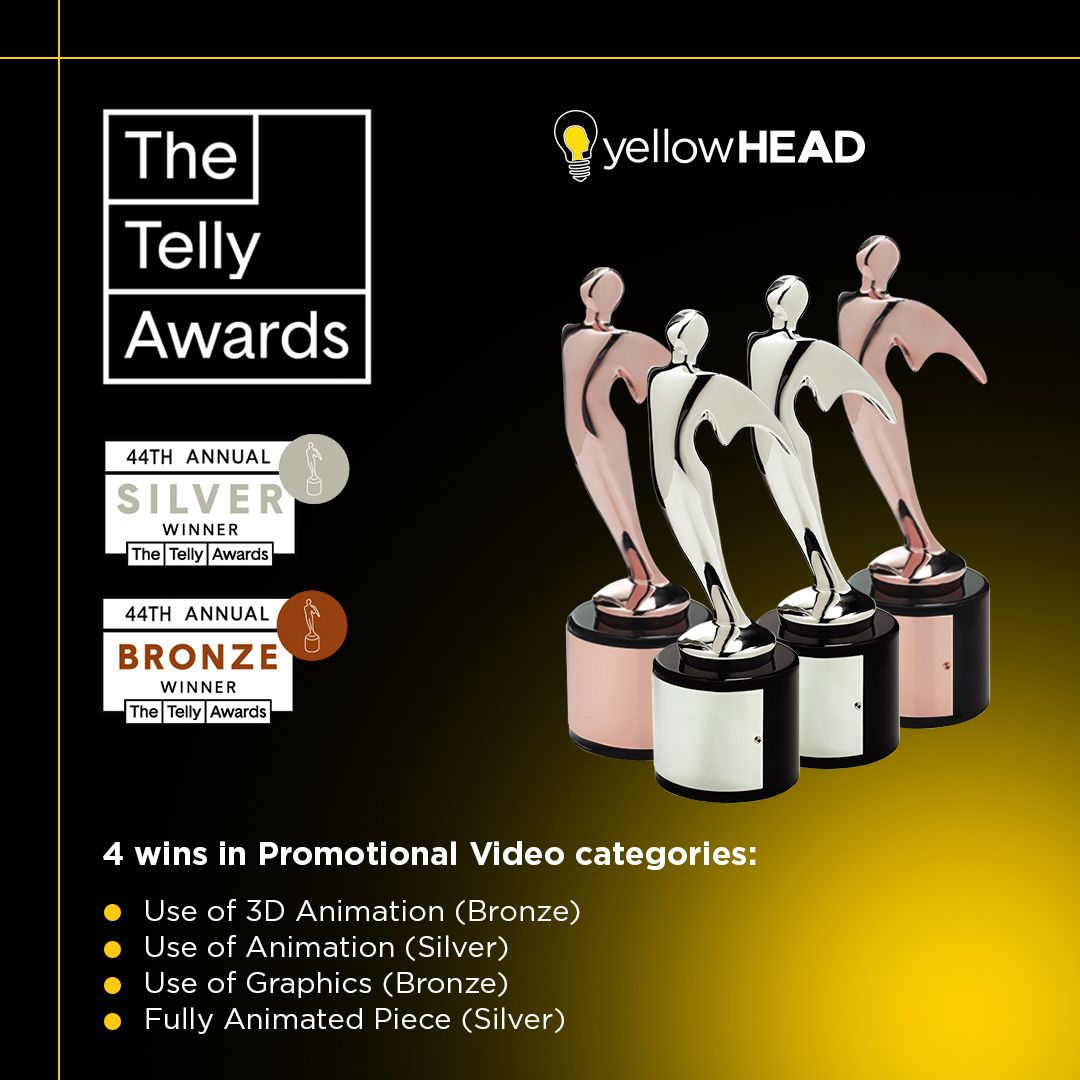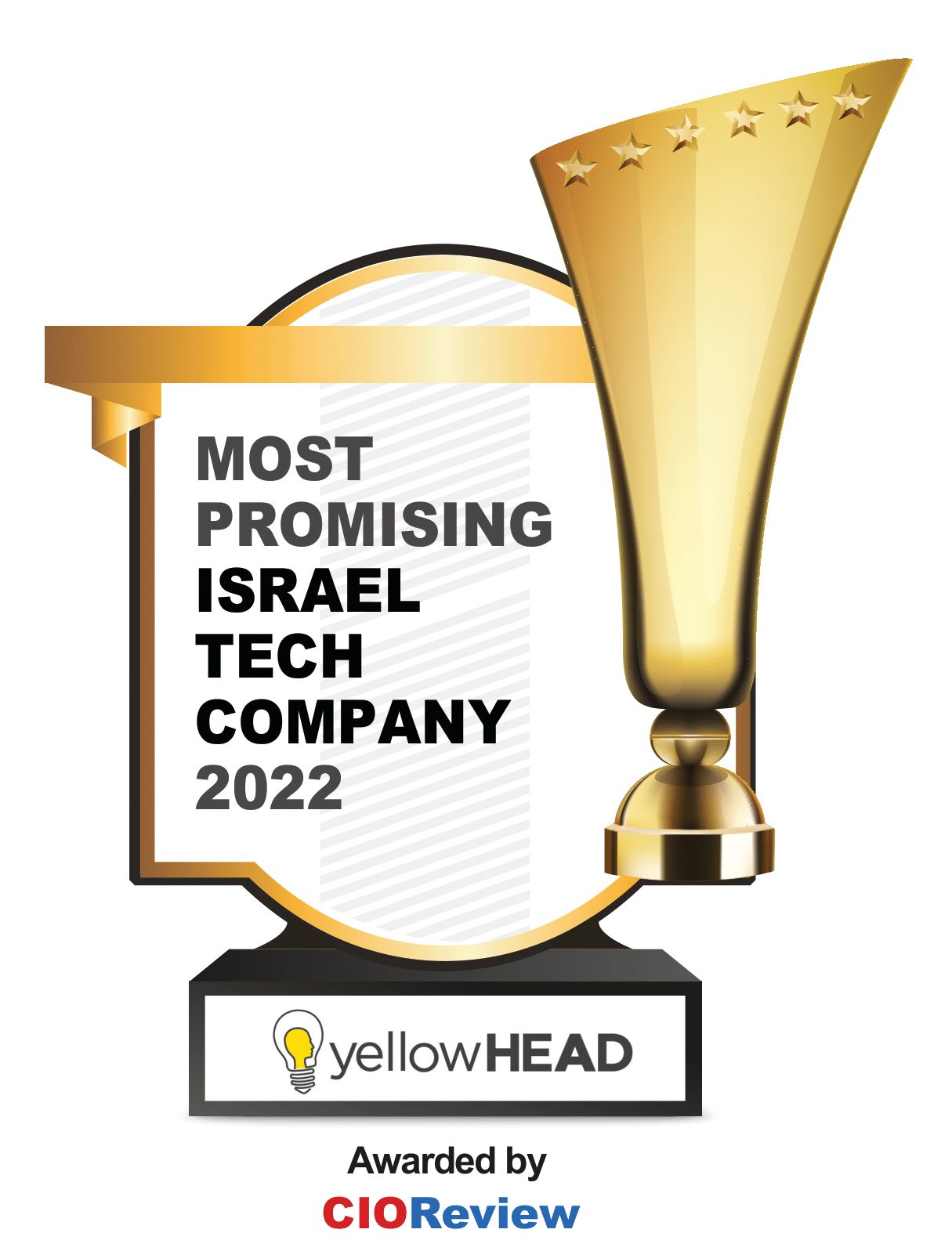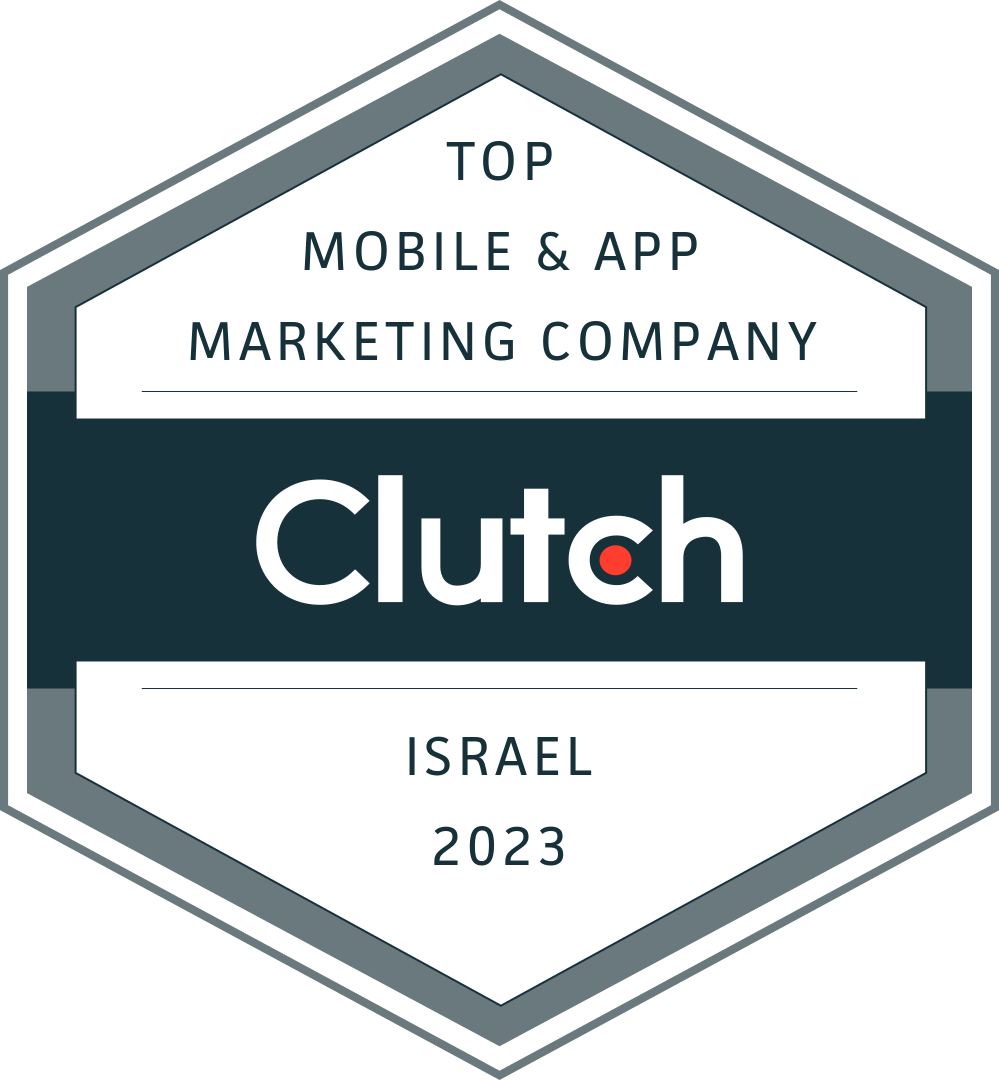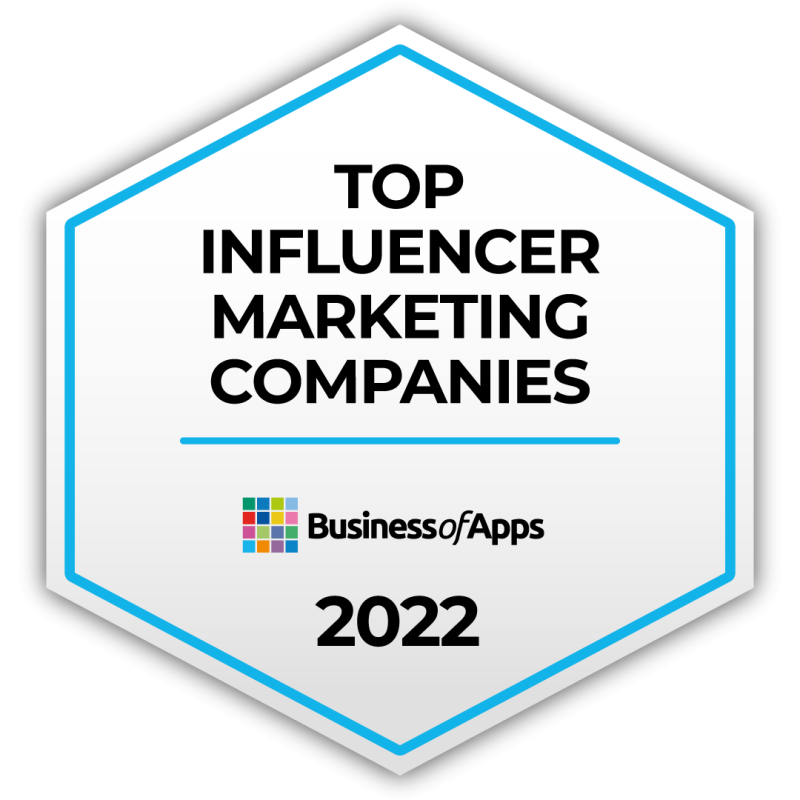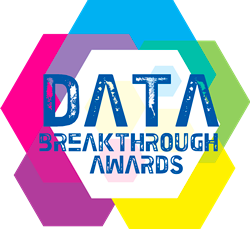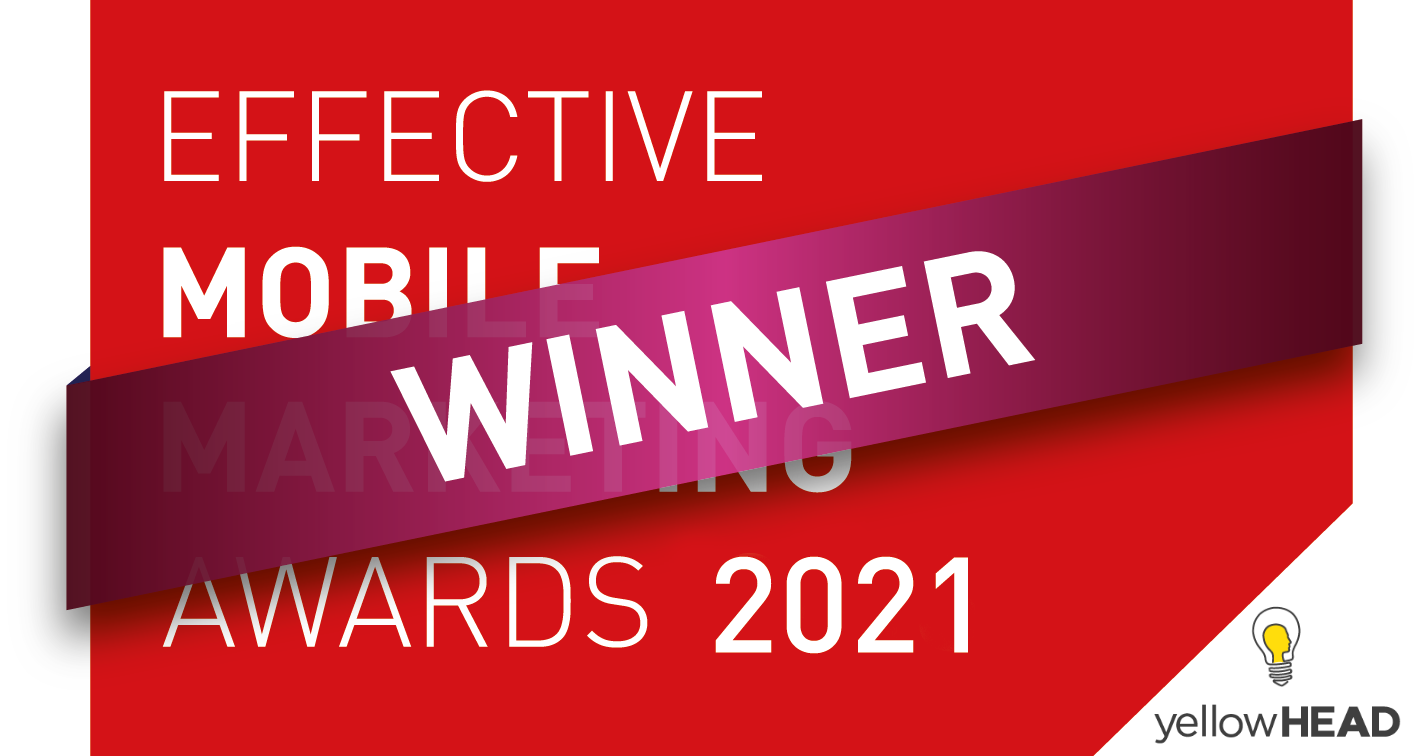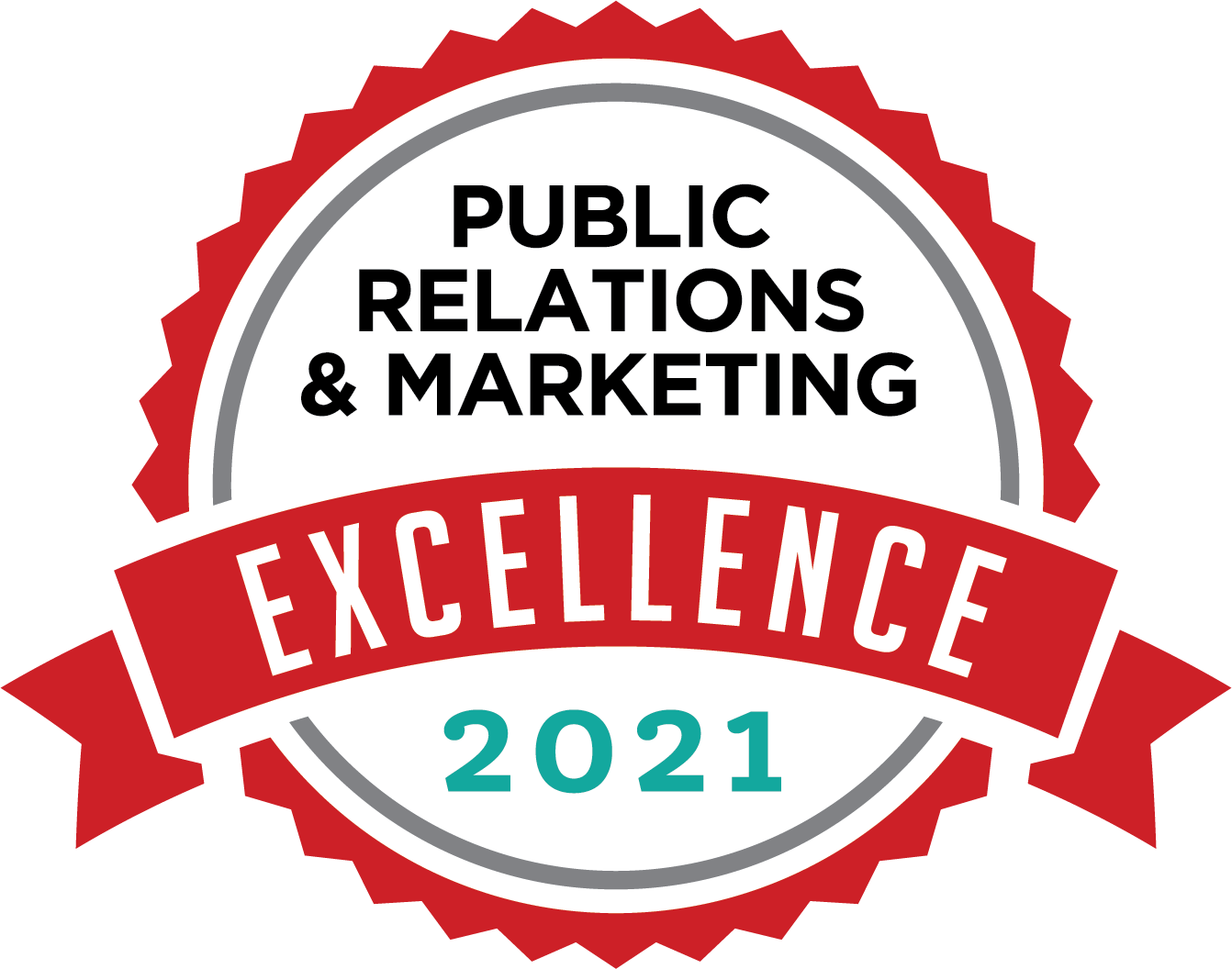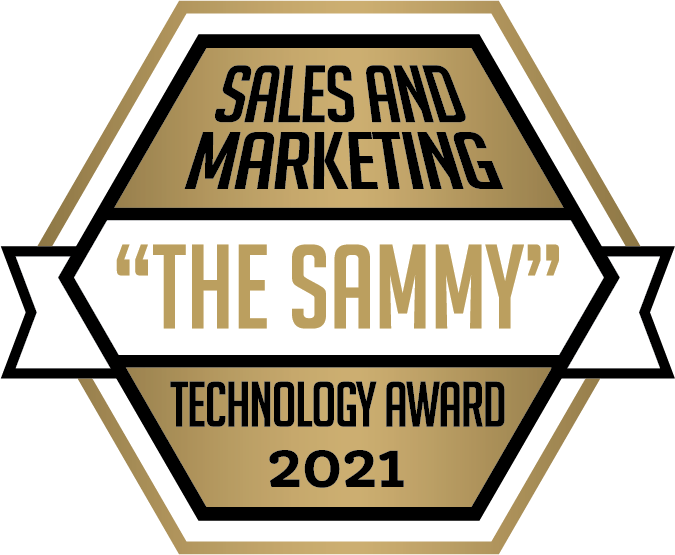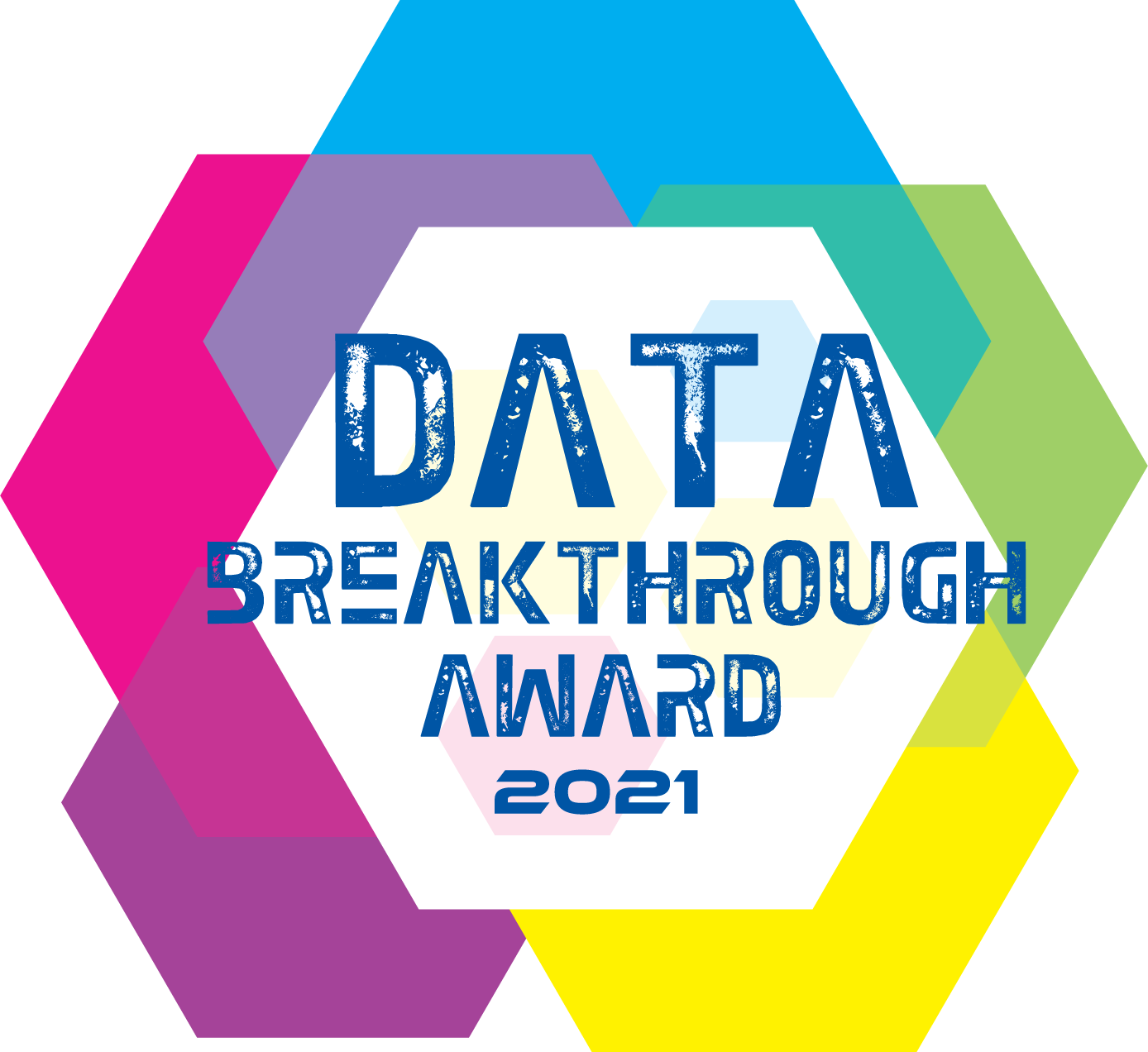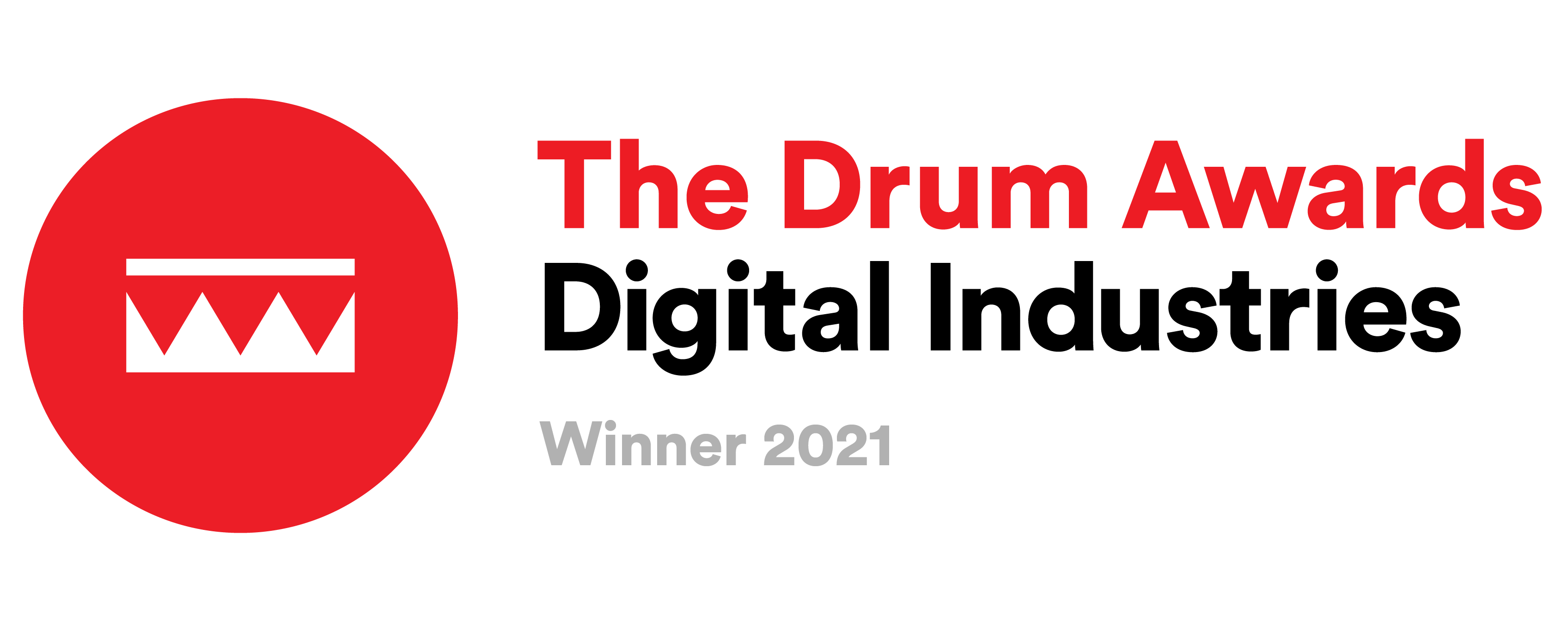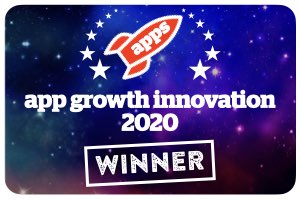App Marketing Insights from App Promotion Summit
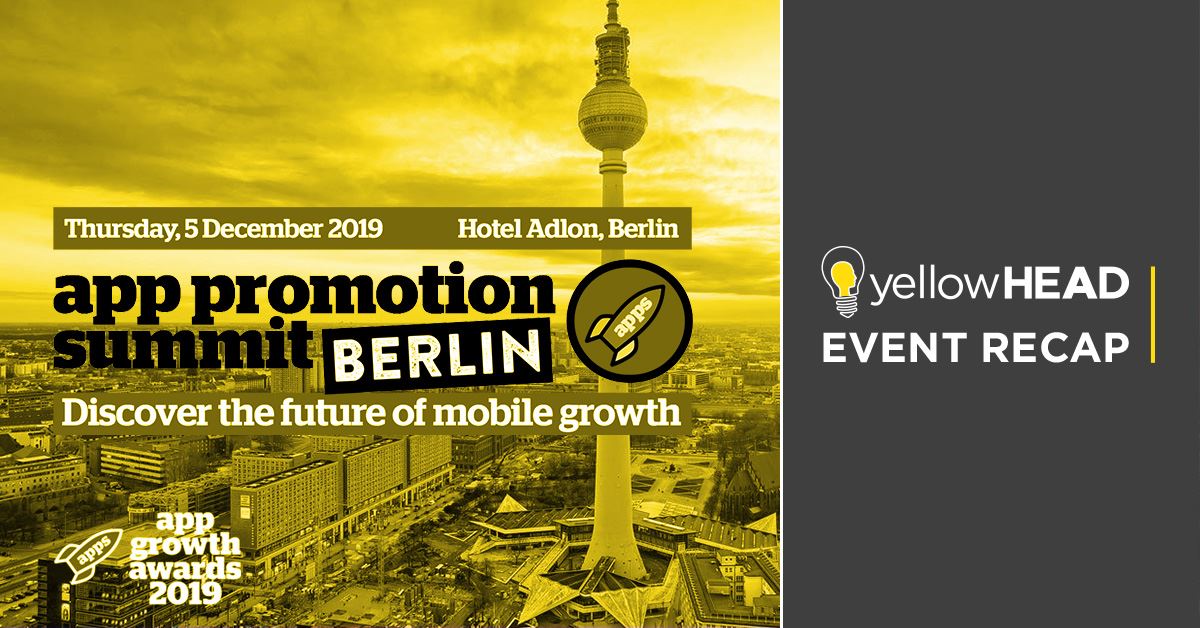
Last Thursday, I was privileged to attend the App Promotion Summit in Berlin. It was an insightful day of interesting lectures given by some of the leading app marketing experts in the industry, so I thought I’d share some lessons learned!
Scaling an Agile, Global App Marketing Department
The day was kicked off with Marvin Rottenberg from ADA Health, who focused on how to scale a marketing team to meet growth goals.
ADA Health gives access to personalized health and health information with the help of AI tech. The fastest growing and highest rated medical app in the world, they’ve grown to over 8M users.
Marvin explained how traditional marketing teams are structured by skills – performance marketers split into Display, Search, ASO, etc.; designers split into video ads for UA, testing screenshots for ASO, etc.; and more. When faced with the challenge of scaling your app to other markets & languages, copywriting roles make sure you have language capabilities.
Company goals for scalability include increasing app signups, increasing traffic to website, increasing user engagement, etc. When companies structure their marketing teams by skills, they’re met with the question of ownership and accountability for these goals. This is the challenge of prioritizing skills over targets.
Marvin went on to recommend forming agile structured teams to meet targets. The teams at ADA, for instance are formed as follows:
- Awareness (work on branding)
- Website (convert website visitors into app users)
- Growth (acquire app users across geos and languages)
- Retention (make sure users do not churn)
- Social media (share company milestones and acquire users organically)
- Customer experience (bridge marketing and product; build products & features out of feedback)
This allows to place focus on output rather than input. Any of the teams can function as a mini company, independent from other teams, and they don’t have to fight for resources. The challenge: how to get the same quality across the teams.
To combat this challenge, ADA adds marketing content and design roles across the teams. Teams don’t work in isolation when it comes to content or design. The copywriters and designers in each team stick to same brand and design guidelines, so content and design are harmonized across the teams.
Marvin closed with 3 tips
- Encourage a growth mindset
- Structure teams based on company targets (look at output, create more ownership & avoid overlap)
- Introduce chapters (address short and long-term targets)
How We 60X Our Growth
The morning continued with Timothy Perchey from CLARK, who spoke about the company’s journey, and how they scaled quickly and efficiently.
CLARK centralizes and digitalizes all your insurances. They started as a one-man-show in 2018, breaking the year up the year into 4 QTRs and 4 channels (social, Google – UAC + GDN, content, publisher partnerships). They wanted to build a case before investing in experts.
Then they placed focus on ROI for 24 months, LTV and user journey. They wanted to understand their type group and know where the type group exists, trying out TV, offline, podcasts, partnerships, promotions, influencers, 2 programmatic networks, social, display, and content. Timothy explained the importance of not relying on one channel.
What’s next for CLARK? They want to focus on the message, having realized they have the same message as the competition. With no direct competitors, they need to build their brand with the goals being differentiation, filling the top of the funnel, focusing on pull vs. push, and knowing their audience and channels.
5 Biggest Learnings of Doing User Acquisition from Gaming to Food Delivery
Anh Nguyen talked about his 5 biggest learnings moving from the gaming industry to non-gaming.
Wolt is a Helsinki-based company that started out in 2014 and grew to other markets, primarily across Europe. They make it incredibly easy for people to get great food.
5 biggest learnings moving from gaming to non-gaming:
- Product: The mobile gaming business model is purely digital (monetization with in-app purchases and in-app advertising). Food delivery is about digital and physical together – connecting restaurants and couriers to the end user, and the physical operation. You need to balance between supply and demand – a challenge Anh didn’t have in gaming.
- Team setup: Wolt has a UA specialist in each country. This is similar to his experience with gaming.
- Channels selection: At Wolt, they focus on channels that have their own inventory (Facebook, Snapchat, etc., with 80% of spend going there, and are using fewer channels than gaming.
- Targeting & optimization: Worldwide targeting in gaming vs. hyperlocal targeting in food delivery. The smaller the audience size, the more expensive.
- Creatives: In gaming, the dominating ad types are video and playable, and creatives are instructional and gameplay types. In food delivery, ad types are videos and images, and creatives use a broader, more brand-oriented approach. The brand feeling in Wolt creatives is dominant.
Rebranding Skyscanner on the App Stores
Next up in the main conference hall was Alexandra Lamachenka from Skyscanner, who spoke about Skyscanner’s recent rebranding process.
They were met with multiple challenges: dependencies, limited resources, hyper-localization. But the biggest challenge of all was time.
They had to rethink these things and remove blockers. Did they have limited resources or no automation? Did they need other people or did they just lack cross-team collaboration? Was there limited time or poor prioritization?
Skyscanner decided to merge marketing with product and engineering, rather than build a marketing troop. They started automating a lot of things, like metadata storage and upload. As a result, time spent on app storefronts updates could now be invested into strategic planning.
They focused on growing the brand and saw a 15% increase in brand searches after the brand refresh!
Previously, the team was focusing only on keywords and CRO. After reallocating resources, they spent time on integrating the app into brand and marketing campaigns, like their recent Black Friday campaign, which saw an 18% increase in brand searches and statistically significant overall organic installs uplift. Skyscanner even got featured in Black Friday bargains on the app stores, which brought even further uplift globally across markets.
Their main challenge now is developing consistent growth, and not just a one-time campaign and one-time featuring. They want to create content for their users that’s also aligned with Apple and Google goals and planning. They want to continue putting together things that are worth getting noticed and building up beautiful stories that get featured.
This means hard work and focusing on the long-term game rather than instant wins.
Alexandra ended with 3 strong beliefs:
- Automate: All manual work should be automated in order to start focusing on big things
- Join forces: Growth is only possible if all comes together – product, marketing, engineering, etc.
- Be bold: Step aside from common practices and what’s been proven by things done before you. Experiment!
App User Acquisition Panel – What Worked in 2019 and What Didn’t:
The panel started off on an interesting note, with the question: “What would you Kill, F***, Marry?”
Marichka Baluk from Blinkist said she would pause smaller channels (they are pausing YouTube, display and web right now), while experimenting with smaller channels that have a lot of prospects (for example, Quora is getting more interesting for more and more players).
Omri Argaman from Zoomd said he would kill wasting time (he thinks marketers should spend more time on management by automating testing). He would not kill but hurt Facebook and test new trendy channels like Reddit, TikTok and Programmatic.
Polina Bogachenkova from 8fit followed up by saying she would keep all big channels (ex. ASA).
Sebastian Wenzel from Getsafe said he would try to find channels that can scale, while also close watching fraud (killing channels where you see obvious fraud).
Where do you think things are headed? What trends have you seen this year?
Ben Jeger, Appsflyer: TikTok stood out from a UA perspective as one of the growth channels. Hypercasual games have continued to grow phenomenally over 2019, which shows how this market is super dynamic and evolving. It won’t get boring and we need to keep on the lookout and continue experimenting. There’s lots of opportunities around the corner for all of us.
When asked about ad groups, Marichka said it’s not as sure as it was before. Like with UAC, we got all the limitations at first and then got more capabilities. At Blinkist, they’re concentrating on sending more events into both platforms in order to make more educated decisions, and finding value behind micro actions within their app so they can define more sweet spots and figure out which actions are more valuable in the long run.
Sebastian talked about being super open to new channels, and how Getsafe tests them on different products. They try to look for tidbits within the app and see if users are interested in a product within the app, in which case the CMR team gets on it! He believes in giving the best recommendation to the user without overselling them.
What tips do you have to manage campaigns and what metrics should campaign managers look at?
Omri says that naming is a huge issue – campaign managers give events different names, and, because of wrong naming, they don’t know what to measure. You need to find the most common, low-level, measurable events. Not everything is measurable – you will never know 100% in anything (fraud for example). As marketers, we need to understand that we don’t always see or understand everything. We should try new channels – he recommends putting $5K somewhere to see if it works, and even if it doesn’t, then at least you know it doesn’t work.
2020 – what are you most excited about for user acquisition?
Sebastian: Not being reactive but proactive. “I’m putting my bet on 5G.”
Polina: Bring the user into the product. Understand who the active and paying users are, which features are they using, how can we build these features, and how can we abandon features users are not using. Move from getting the user to keeping the user and being successful.
Omri: We’ll be able to be smarter. We’re able to collect more and analyze more. He’s also excited about marketers being better, mentioning specifically how happy he is about all the privacy issues being addressed, and how it will make our world better.
Marichka: See value optimization and what we learn about our customers. Get smarter, more sophisticated, more personalized. She’s curious to see how the interactive content develops.
Ben: As the different UA channels are getting more and more competitive, we’re starting to see more emphasis on old channels. Using email providers, smart banners on mobile web, integrating links on Instagram Stories with the ‘swipe up’ feature à these will become focus for a lot of people in 2020.
Workshop: Social App Advertising Power Panel
I decided to change environments and visit the Social and Influencer Zone, where I sat in on a workshop about app promotion using the newer social channels.
Luke Costley-White from Asana Rebel said paid social this year (Facebook and Instagram) has been the main driver of UA. They’re trying to diversify that mix – testing Snapchat (somewhat unsuccessfully) and pushing paid content on a few other channels. Next year they plan on being solely paid social driven. What other than Facebook can you add onto that mix? Luke says he’s found Twitter to be a great channel to target males on and Pinterest for females. Also, now people are looking more into Snapchat and TikTok.
Alper Taner, mobile growth consultant, hasn’t seen any brand with less than 60% of their budget on social.
Kristoffer Nilsson-Kampitsch, Sphock, said some change is coming from some brands becoming more established. There are also new things that social channels are investing in like Snapshows and IGTV. But in their mix, they see it more to reach short-term goals.
Moving on to the analysis side of things, Alper said marketers should take action based on analysis, looking at performance at the demographic level. It may seem that ads aren’t performing, but different ads may work for different demographics. You may get a terrible CPA but it would still be a killer ad for females aged 25-44, in which case you’d reconsider your targeting structure or campaign structure. It’s important to zoom out and then zoom in, analyzing smaller things like placement, audience and device level on an ongoing level. You can then iterate on those ads accordingly. Such analysis will save you money at the end of the day and help to scale.
Luke discussed the bias of initial Facebook testing. Usually, you’re missing a huge audience by assuming, for instance, that you’re a male or female only app. You should avoid that kind of bias, especially as channels become more developed and more competitive and expensive.
He went on to say that marketers naturally try to use the same lookalike audiences they were using on Facebook on new channels. But different channels work differently. Lookalike audiences are terrible on Twitter. Pinterest is very seasonal and has a lot to do with planning, so you have to start campaigns at the start of when the planning would be (before Xmas, wedding season, etc). On smaller channels, you can learn quickly on a small scale and you can actually take those insights to Facebook. You need to adjust your conversion funnel.
Alper continued this line of thought by referring to an instance using the same ad descriptions on Facebook and Twitter. But since Twitter is more short and to the point in its nature, they found that shorter ad descriptions worked much better. He recommends starting with your best bets, but stressed the importance of quickly adjusting learnings per platform.
Kristoffer went on to say that some platforms are good for some verticals, other platforms for other verticals. Time will tell if spending on TikTok is justified. It’s got some interesting ingredients – volume, reports showing time spent is higher than other platforms – but how is the time spent on the platform? Traditional social media platforms include following up on friends near you, so the ads can be a bit intrusive. Tiktok, however, is not so much about following or sharing with your friends. Rather, it’s more about consuming content (similar to YouTube, but with shorter videos of 10-15 seconds). App install videos are also 10-15 seconds, so it could be a good fit. But, it’s primarily a young audience so it may be irrelevant for many advertisers.
Some comments from the audience mentioned how TikTok is still maturing. It copied the Facebook functionality so it’s easy for Facebook advertisers to implement. Results seem to be mixed, with some saying initial test results don’t look great, and others saying they’re actually doing really well on the platform.
When asked about User Generated Content, Luke said UGC is both super powerful and very difficult to do well. With influencer platforms and creative agencies, you can find a creative that really resonates with the audience. But it can also go really wrong, leading to bad feedback and bad PR. So when you’re testing new creative styles, make sure you’re targeting really small audiences on small budgets. See how they perform and scale afterwards. Take time to see the connection between your product and audience, and how your audience wants to speak about your product. If you can do that, you can go way beyond the effectiveness of Facebook. But it’s all about that creative ability.
Moving on, Alper provided some targeting tips: Try different seed audiences and different sizes. Test 1%, 4% and 7% – this makes it easier to scale because you have a bigger audience size and Facebook may still be able to find good audiences. Try to figure out how to optimize per placement – Instagram, Newsfeed, Audience Network.
Regarding creatives, he suggests iterating on successful creatives and creating variations. Change one element at a time and see what changes work. The first 3 seconds are the most important, so optimize towards those – you can create 10 different videos by using the same video but changing just the first 3 seconds. If you lose a lot of engagement during the first 3 seconds, then you get a good indication of what doesn’t work.
When asked how they measure success, Kristoffer answered they’re beyond counting clicks and installs. Rather, they’re optimizing for deeper funnel events. It’s great to optimize for something revenue related.
One piece of advice?
Luke: The big thing this year has been creatives and next year will be the same. Bidding has become standard. The only thing that will change will be automation and you will do that in order to spend more time on creatives. Keep in mind that one really successful ad you have is just one idea. You should test concepts that are super different to each other. The thing that takes you to a great ad is the concept itself.
Alper: Every UA manager should have their own product roadmap. It’s all about systematic testing and creating that growth loop. You always have the history of what worked and why it worked, so you can replicate the success for other markets. The same ad could be the best performer in both the UK and US, but just changing the music could have massive effect. Or, completely different ads will work.
Kristoffer: Test, test, test! Learn from it and then test again. Question the data and why you see the results you do.
Workshop: Third-party Android App Stores Distribution: A Deep Dive into the Huawei AppGallery
Next, I wandered over to the App Store Optimization Zone, where Phiture was talking about App Store Optimization on third-party app stores.
Currently, worldwide smartphone shipment is dominated by Android and iOS.
While iOS is a closed system (you can only publish on the App Store), Android is an open system with lots of third party Android systems out there. True, most traffic is still coming from Google Play, but there’s a 90B downloads gap! The rev opportunity is 40-45% of app downloads you’re missing out on if you’re only on Google Play and iOS.
50% of this opportunity is from China, with half of these downloads coming from China. But there’s no Google Play in China – rather, there are many app stores.
This begs the question – are 3rd party stores only relevant for China? What are the regulations? Do you need to have a subsidiary there? Is your app truly localized?
Huawei is the largest telecom equipment maker, growing really rapidly while many other Android devices are in decline. In fact, Huawei’s AppGallery has more yearly downloads than Google Play and the App Store combined! (*keep in mind this includes app updates)
With the trade ban forcing US companies from doing business with Huawei, Google is forced to comply. Huawei therefore removed Google Play, a move which will most likely push up AppGallery use. But the problem is they don’t have the Google Play ecosystem to back that up and get users excited about their only 45K apps.
What’s the solution? To create their own developer ecosystem by getting developers to develop for their app gallery. They incentivize developers by only charging 15% of their revenue, as opposed to the 30% Apple and Google charge. Plan B is HarmonyOS, but this is speculation right now.
What will happen with the trade war? Is it worth to invest in developing for the AppGallery?
It’s not clear, but it’s intriguing enough to start asking “how can we optimize for AppGallery?”
Phiture went on to discuss ASO on Huawei AppGallery. The algorithm is still relatively simple. Not many apps are on AppGallery right now, so you could have first-mover advantage by implementing some basic ASO tactics.
The first branch of ASO is Visibility – how to get users to find your app on AppGallery. This is where keyword optimization comes into play – the key is to find high volume keywords and really high conversion keywords.
There are some technical differences between the AppGallery and the Play Store:
- Title: 50 characters on the Play Store, 64 on AppGallery (As with the other app stores, the most important keywords should in title)
- Long description: 4000 characters on the Play Store, 8000 on AppGallery
- Short description / introduction: 80 characters on both
The next branch of ASO is CRO: did your users see your app in search, featured, top chart, gift centre, store ads?
The icon is the most important thing here, followed by the title (so it’s important to show features or elements in your title). Next is the first 3 screenshots.
One thing to keep in mind right now is there isn’t a native testing environment on AppGallery (though they claim it’s coming soon). If you want to optimize your conversion rate on AppGallery, the simplest way is to follow your results on Google Play, given that the layout is pretty similar.
Reviews also play a role in ASO. Due to fairly limited reviews on AppGallery, it seems fairly easy to get into the top rated apps at the moment. If you can get a few good reviews, you’re already above the competition.
At this stage, there are no third-party tools to track your performance (another feature we should expect soon).
Workshop: Interactive Ads: 5 Things We Learned the Hard Way, so You Don’t Have to
I kept moving around, this time to the App Advertising Zone where Tim Shepherd from Wooga talked about the evolution of in-game ads. We’ve gone from banners to fullscreen interstitial to full screen video, and what’s next? Interactive.
Wooga’s first assumption was that playable ads would be super easy. But they’re not.
What’s a playable ad? Some people think it should be a vertical slice showing off your key features, others think it should include gameplay of the first level and then go straight to your game, others treat it as an ad (cherry picking key moments), and others see it as a branded mini-game experience.
Playable ads are data-driven creatives. While with other ads you can track IPM, CPI, ROAS, game KPIs like retention and ARPDAU, with playables you can track engagement throughout the ad and see at which point of the funnel you lost the engagement of the user (Loaded, Started, Completed, or CTR).
Their second assumption was that people were going to love playable ads, but they found that they need a lot of convincing. This raises the challenge: how do we get people who see our interactive ad to engage with it?
There’s the element of audience consideration: assumed familiarity, attention level, trust.
Tim says, “don’t be subtle.” Don’t assume people will know what to do. Several things can help: text or animated hints (better) or looping and idle actions (best).
Rather than following the K.I.S.S. rule, playable ads should follow the K.I.E.S.S. rule – keeping it extremely simple! Wooga has seen that the simpler version of playable ads tested always succeeds. So try to keep it the most straightforward experience as possible.
It’s ok to have a steady consistent falloff between your Start, Completed and CTR stages, but when you see a huge dip between two steps, that’s when you have a problem you need to focus on.
Tim had several more recommendations:
- Show progress (for example, make it known with text “0 out of 5” that they only have 5 steps)
- It’s important to communicate concepts, not necessarily details
- Identify what your WOW! moment is and work backwards
- Always keep your game logo and install button throughout the entire experience
- Really focus on your end clause – make it animated and dynamic
He also covered some worst practices, like having both “play again” and “exit” button (they function the same way).
You can present an ad that doesn’t necessarily define your final product – it may not be the best marketing technique but it’s a trend right now that’s working for some brands.
What about non-gaming? It’s hard to gamify non-gaming experience, but the ad doesn’t have to be your experience verbatim (ex. Burger king did a maze). If your product isn’t fun, if you have a “dry” app, then an interactive app can be a way to find the fun and get people excited about your service.
What’s the difference between an interactive video and HTML5?
- An interactive video is a video that plays back, pauses intermittently and asks players to take an action. It’s good for a linear experience.
- HTML5 includes a choice element (ex. choosing from several objects), which means you need to create a video clip for each object they could choose and from that even more clips. This creates a pretty huge file size.
Another assumption they had at Wooge is one-click publishing, but every network has different requirements which they change quite frequently.
Here are some campaign configuration gotchas:
Issue 1:
- Problem: Newer/’better’ playables not out-performing older ones.
- Reason: Data bias for machine learning networks. More data for ad A results in better targeting.
- Solution: Patience. Give it time to learn how to serve your playable ads. In the meantime, don’t kill your old ad. Let it run while it’s still working.
Issue 2:
- Problem: Not performing at all
- Reason: Some concepts simply don’t resonate
- Solution: Have fast and flexible production
Issue 3:
- Problem: Campaign not scaling, low # of impressions
- Reason: Videos are getting lower CPI and winning all the bids
- Solution: Playable-only AdGroups
To wrap it up, here are some main takeaways from Tim’s talk:
- It takes quite a lot of insights from both the product and marketing sides to implement a successful playable ad.
- Don’t underestimate the need to make things easy.
- Select a production solution that works for your games, resources and strategies.
- You need to learn a little technical knowledge.
- Campaign configuration is as much of a challenge as production.
- The future is interactive. “This is just the beginning of using software as advertising.”
App A/B Testing: How to Achieve Growth in Mobile
I returned to the main conference hall to listen in on the fireside chat between Wout Laban from Leanplum and Sebastian Michel from Mypostcard.
To do proper A/B testing they said you need to:
- Have the resources
- Have the time
- Know what to optimize for (what are the KPIs and how do we measure success for those KPIs?)
The process is Idea à approach à measuring results.
First thing’s first: figure out which ideas to test first. What’s the scope, resources needed, impact we’re expecting? It’s easier to get results in short time with more top funnel tests, but how do you get people to sign up and buy repeatedly?
It’s all about the first impression – analyze what people are actually interested in when they go into your app, and implement that in your tests.
Tests can include colors, scopes, different functionalities, etc. Just changing the text might work, but sometimes you need to change the idea entirely.
What do you do after a successful A/B test? “Always be in beta,” meaning take the winner from Test 1 to Test 2 and so on.
Complex vs. Simple tests: If it’s easy to test, why not? With complex tests you need to see if you have the necessary time and resources.
Keep in mind that just because something worked for someone else, doesn’t mean it will work for you. Try to understand the meta behind it – look at the variables and try to figure out why it worked, what was the idea behind it, and see if you can implement it in your tests.
Analytics: You need to be highly efficient and figure out what you can learn from the campaigns and A/B tests, then educate internally. In the end it all ties together.
Take things you’ve learned from previous tests and see how you can expand on that. See what worked in terms of messaging and expand on that in terms of functionality or user experience.
Lessons from the Experts: Building a Growth Machine
Neil Mills then took the stage to discuss cross-functional growth teams.
He started by explaining why 2020 will be a challenge:
- Data collection: There’s more devices, more platforms, more people. How do you collect that data, and combine it together to make a decision?
- More ad partners = more options. Ultimately more partners = scale. But it means you need to have a good testing methodology.
- Growing privacy concerns: There’s a global shift. How do you overcome that?
- How do you measure what users are doing, where they’re registering, etc. cross-device?
Cross-functional growth teams, according to Neil, are less about hiring someone as a specialist, but rather much more about organizational change and taking a data-driven approach to how to go about marketing your business.
To grow as an organization, there’s so many different stakeholders and they’re all measuring different things. Weaving conversations together is difficult, but breaking the barriers is really important.
In the past, different teams didn’t necessarily speak. They each had their own goals and KPIs. They were very specialized and good at working in their individual area.
Now, cross-functional collaboration brings the organization together. How can you get a single source of truth as an organization? How do we grow the business as bottom line and how does everyone align to do that? We’re now understanding the cross-platforms flow, previously silent.
Neil suggests employing data-driven individuals that can apply the same methodology and thinking to various aspects.
Furthermore, he recommends to:
- Test new channels, new creatives, new audiences
- Constantly measure ROI/LTV
- Iterate
He went on to discuss how automating insights means scalable growth. If you can automate the right insights, then you can make them usable.
What do you need in terms of your stack?
- Aggregated data – How much did I spend and what happened with that?
- Granularity – Publisher and creative data. You need to know who you’re up against.
- Automation – How can I boost ROI? Can that be delivered to my inbox?
Finally, Neil spoke about how using technology to bring your whole organization together. Tech aligns all cross-functional teams with unified marketing data.
Mobile Growth Nightmares:
Mobile Growth Nightmares is a podcast series by Gessica Bicego and Andy Carvell. At APS Berlin, they held a live recording with Belen Caeiro from Babbel and Dora Trostanetsky from Soundcloud. After the two women shared some personal past mistakes, they moved on to their Brilliant or Bullshit segment.
This time around, they discussed advertising on TikTok. The platform can reach a huge audience very quickly and content goes super viral. It’s the fastest growing social platform. In fact, Facebook is trying to compete and potentially disrupt TikTok with Instagram Reals.
Will this work for Facebook? Maybe not. After all, there’s a different, less goofy, audience there. So, is this brilliant on Facebook’s side that they’re cloning TikTok, or bullshit?
Belen and Dora both agreed it’s brilliant. This is not the first time Instagram is taking an idea from a different app that turns out to be a huge success. Take, for example, Instagram stories. By taking an existing feature that’s been proven to work, you save yourself the user education phase.
Andy, on the other hand, called bullshit. He’s confident that Facebook can probably pull it off. After all, they cloned Snapchat with Instagram Stories and took a lot of traffic from Snapchat by doing so. But he personally feels it’s another bullshit monopolistic move and is sick of all his apps being owned by Facebook.
Gessica likes the idea of launching all of her campaigns on Facebook. It makes things much easier for her. She’d rather do that than launch campaigns on TikTok. She is concerned, however, that Instagram is sort of everything – it was photography, now it’s stories and sharing the day-to-day, next it will be goofier. Will people be able to make fun of themselves in front of everyone on Instagram? That’s what TikTok is about and Gessica is not sure the Instagram userbase is up for it.
The Future of App Growth Panel
Finally, just before the cocktail roundtables, several experts took the main stage to discuss what’s next in app growth.
How much of the future of digital is audio?
Hannah Parvaz from Curio said that audio hasn’t been explored much before, other than music. Traditionally it’s been mainly podcasts, but now seems like the right time for it, with IOT and smart speakers. It’s new ground.
Jake Ness from Inflecto Media thinks advertising within podcasts could be similar to influencers. It could grow as an advertising channel.
Robert Kelly from Papayamobile said there’s more and more talk about podcasts and podcast adverts are becoming more prevalent.
Michael Korkia from Taxfix took a different stance and said that everything they’ve tested so far with audio advertising has not really worked.
How much branding is actually blanding (stuff that looks like everything else out there so it doesn’t actually stand out)?
Michael said that everyone uses the same colors, layouts, imagery. He said they’re also part of the problem and we’re all guilty of blending in with each other, while there’s lots of room for differentiation. At Taxfix they’re really focusing on the character of the brand now. To really continue the growth and become an influential company, you should really differentiate from everyone else, and that should be reflected in the creatives.
Jake went on to talk about the huge growth in finance apps, with the rise of personal finance management apps and banks realizing they should have an app if other banks do. There’s also been a huge rise in apps with environmental/social impact.
Hannah expanded on that last point and explained how people are caring more and more about how they’re spending their money and what good is that doing for either themselves or the planet.
Michael feels that it’s not even about the vertical of the app, but rather it’s about whether the app has multiple services or multiple things to offer the customer. People want to see everything in one place.
Do you feel we’ve plateaued?
Several final thoughts came up. Jake said how, with IOT, people aren’t constrained by hardware. Hannah added that voice control will be more and more important as we go on.
Following these sessions, I joined several other marketers at the cocktail roundtables as we learned how to make Raspberry Prosecco ?
And finally, as a cherry on top of the cherry in the Raspberry Prosecco, I was honored to attend the App Growth Awards, where yellowHEAD was a finalist for two awards!
That’s all I’ve got for you today! There were many other interesting lectures and workshops I couldn’t attend (can’t be in 2 places at once!) but I hope this gives you a glimpse into where we’re at with App Marketing today and going into 2020.






